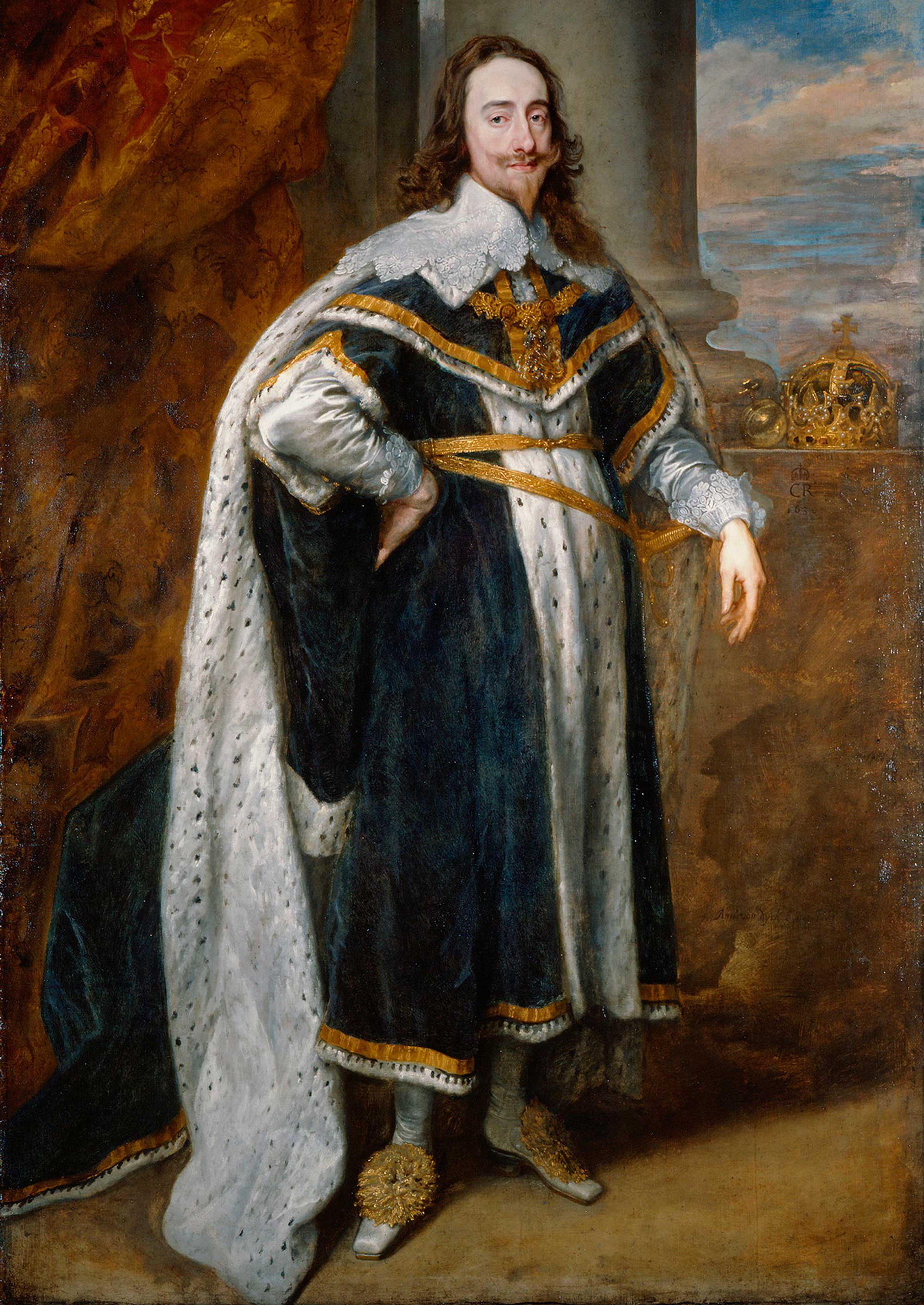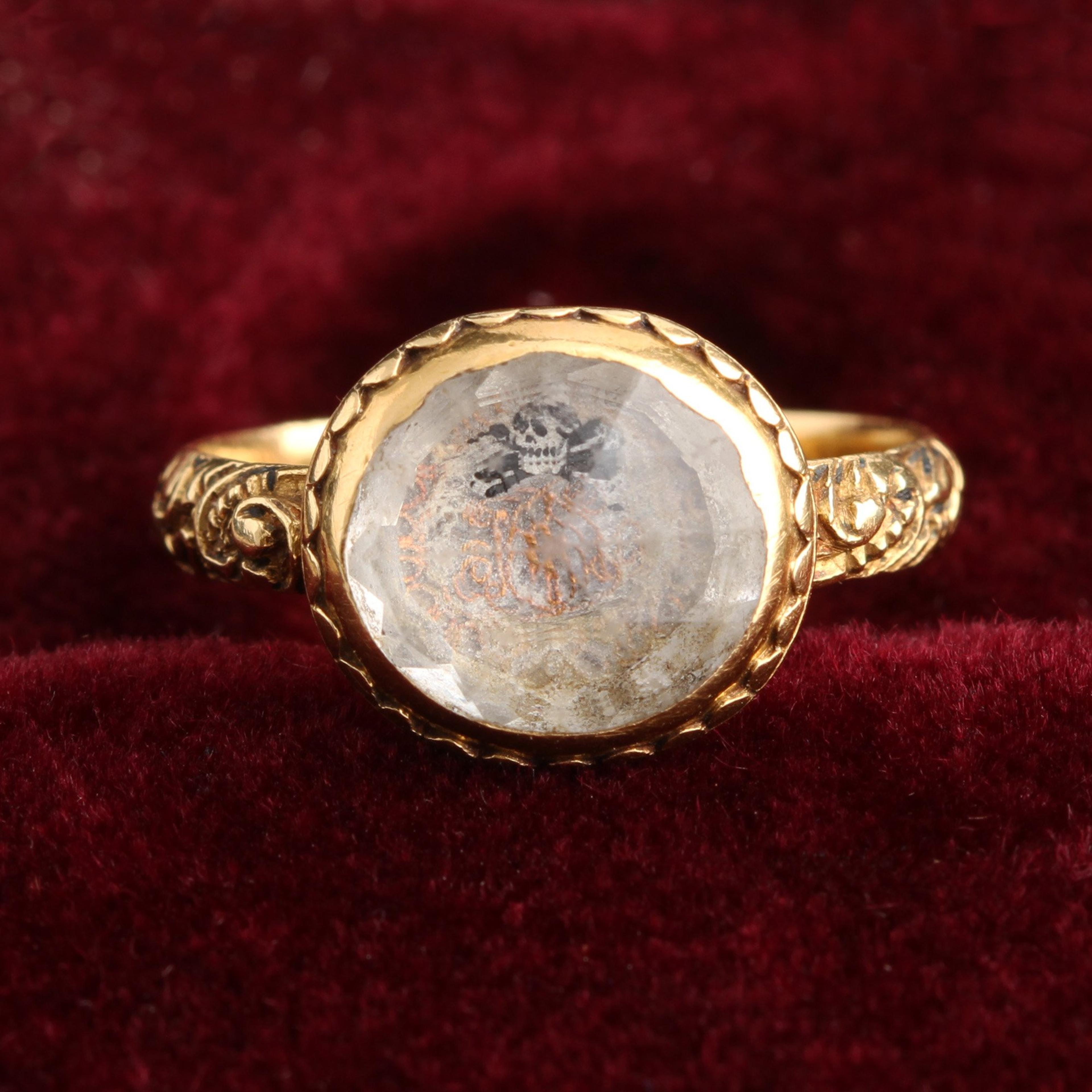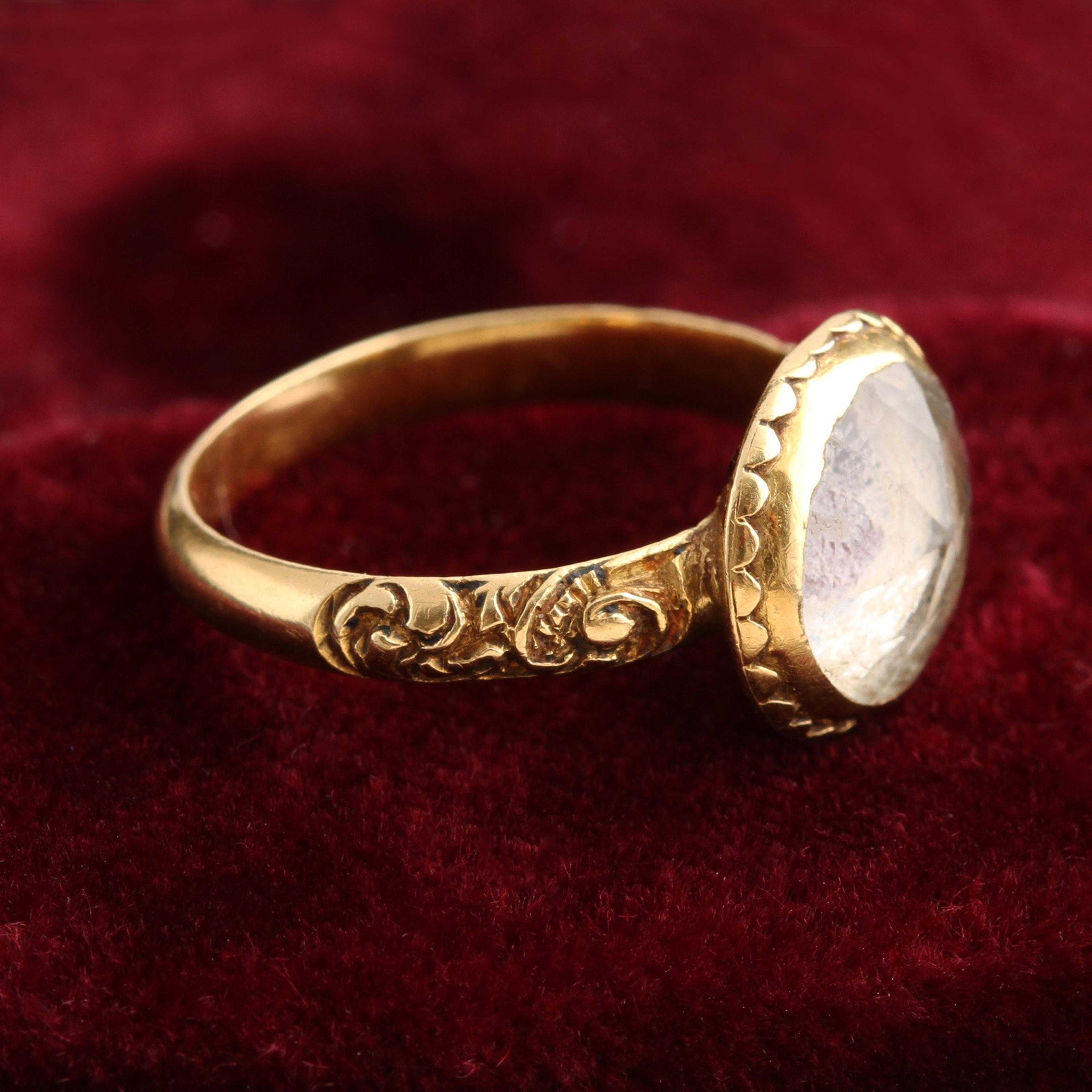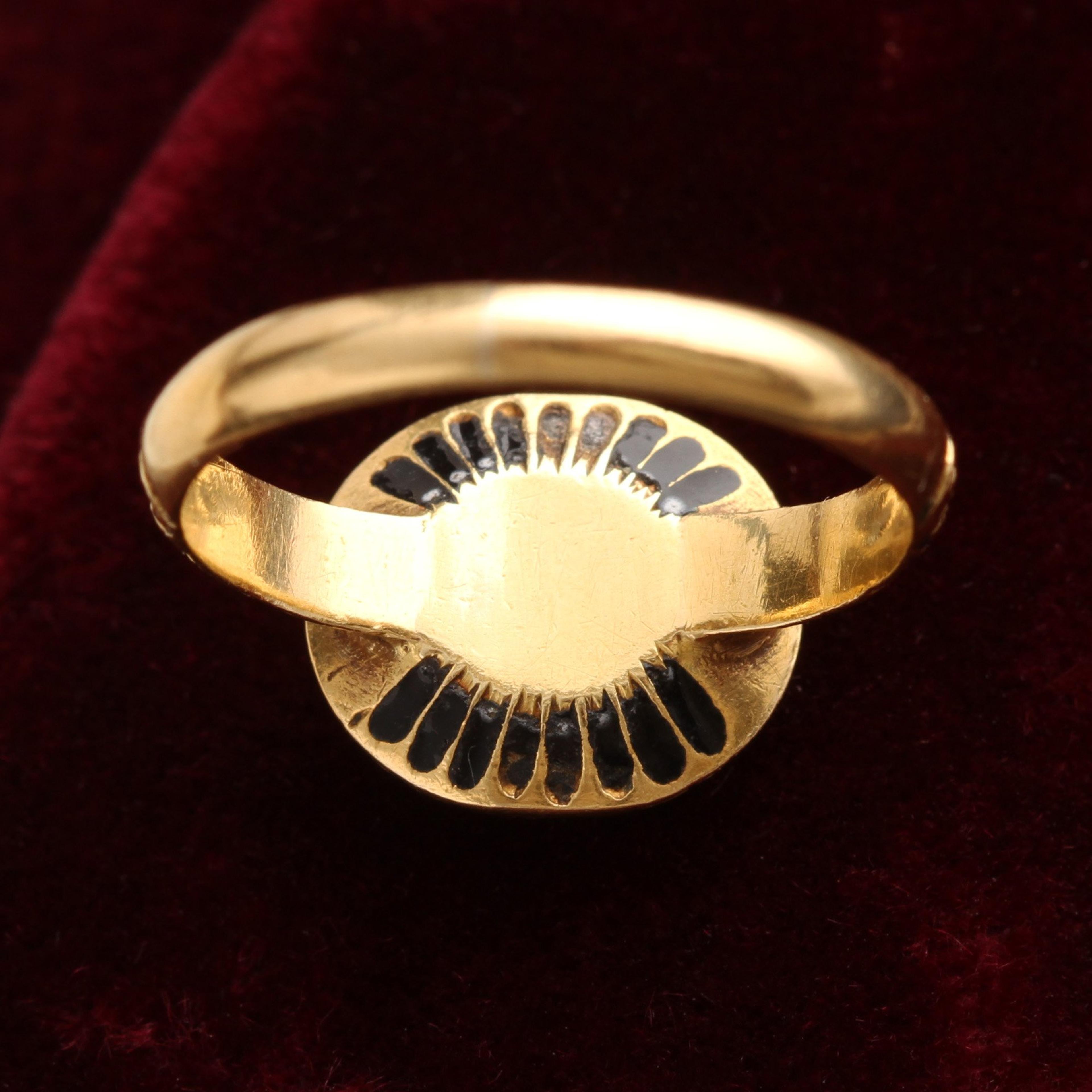Stuart crystal takes it's name from the rock crystal jewelry worn by loyalists to the Stuart monarchy following the 1649 execution of King Charles I. Early Stuart crystal jewels typically feature a miniature of the King, or his cipher, under faceted rock crystal. These mourning pieces were worn discreetly (if not outright secretly) by supporters of the crown in the tumultuous years after his death. Later in the 17th century, Stuart crystal was made and worn for more personal (and less political) reasons, including in memory of lost loved ones. This rare c. 1680 Stuart crystal ring features skull and crossbones over a faint set initials. The ring features beautiful detailing at the shoulders with tiny fragments of enamel and classic Stuart enameled fluting on the underside of the head.
thedetails
- Materials
22k gold (tests), enamel, rose cut rock crystal
- Age
c. 1680
- Condition
Good - enamel on underside of the head is mostly intact; water damage has made the initials beneath the crystal difficult to read
- Size
6.5, resizing not recommended; 1.08cm x 1,2cm head, 2.5mm shank
Need more photos?
Send us an email to request photos of this piece on a model.
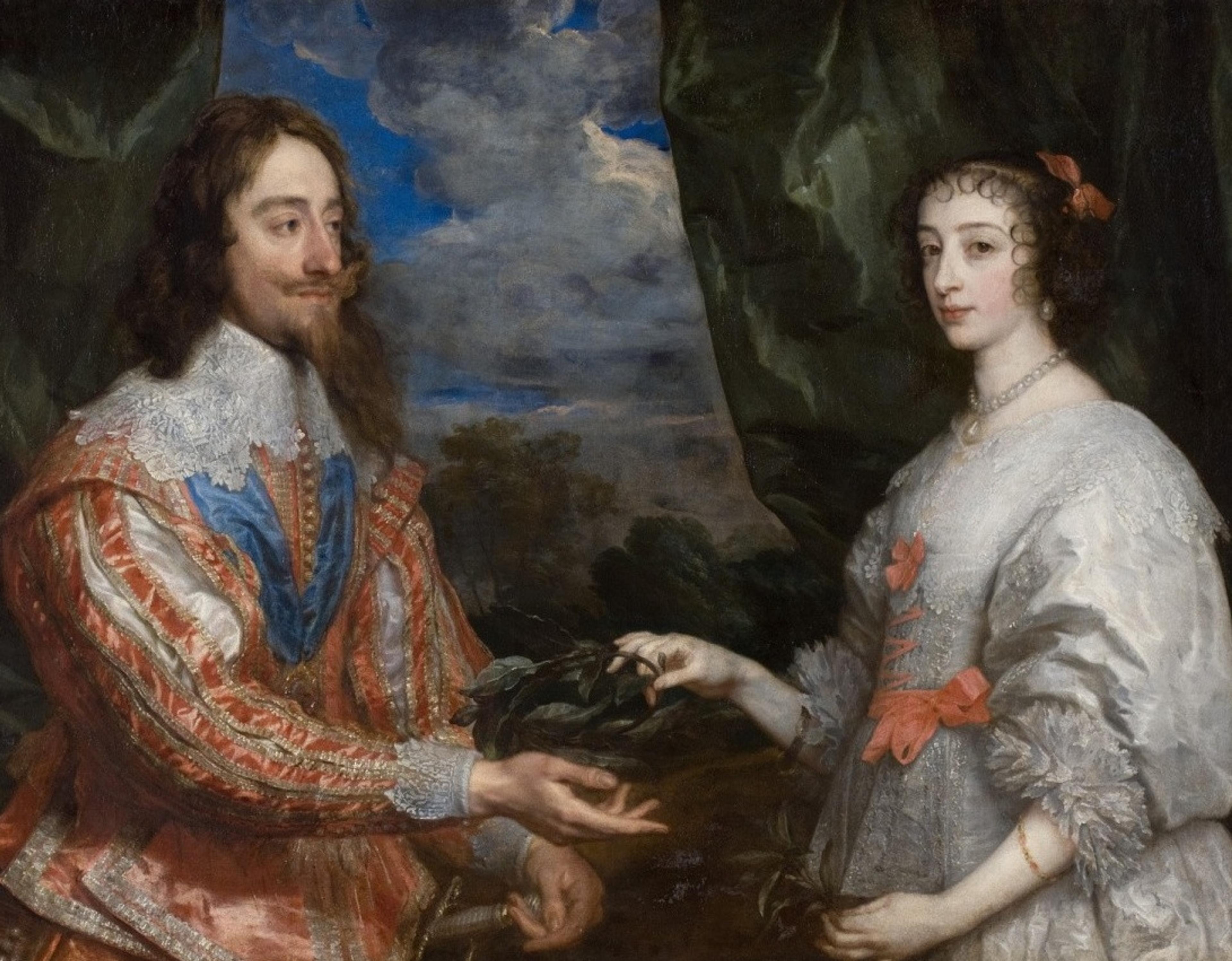
Aboutthe
StuartEra
1603 — 1714
A new era dawned when Queen Elizabeth — the last Tudor monarch — died without an heir. The monarchy was temporarily displaced by the Commonwealth of England from 1649 to 1660 by Oliver Cromwell, but was restored — aka "The Restoration" — as Charles II was invited to take the throne. His father, Charles I, had been beheaded in 1649, and most of the jewelry we see from this period was at least stylistically related to this controversial political event. During this time, discoveries and innovations transformed England and Scotland, which were conjoined after a long period of feuding. Coffee became a new trendy beverage, with 600 coffeehouses in London all catering to a different type of clientele. This imported novelty beverage was possible because of the UK's rapidly expanding worldwide trade network. Not yet interested in acquiring territories, the island nation focused instead on making a fortune exporting wool and importing goods like slaves, sugar, and tea. Everyone (except the enslaved people, of course) benefited from the new merchant class that arose, and in the process the Royal Navy became the most powerful in the world. The look of London changed, too — after the Great Fire of 1666, Christopher Wren was hired to rebuild the city's damaged churches, with his greatest accomplishment being St. Paul's Cathedral.
please note:Terms of Sale
Antiques can be returned unworn and in original condition within 10 days of delivery for an exchange or refund minus the cost of shipping. Once a piece has been altered, including ring re-sizing, it is FINAL SALE.
